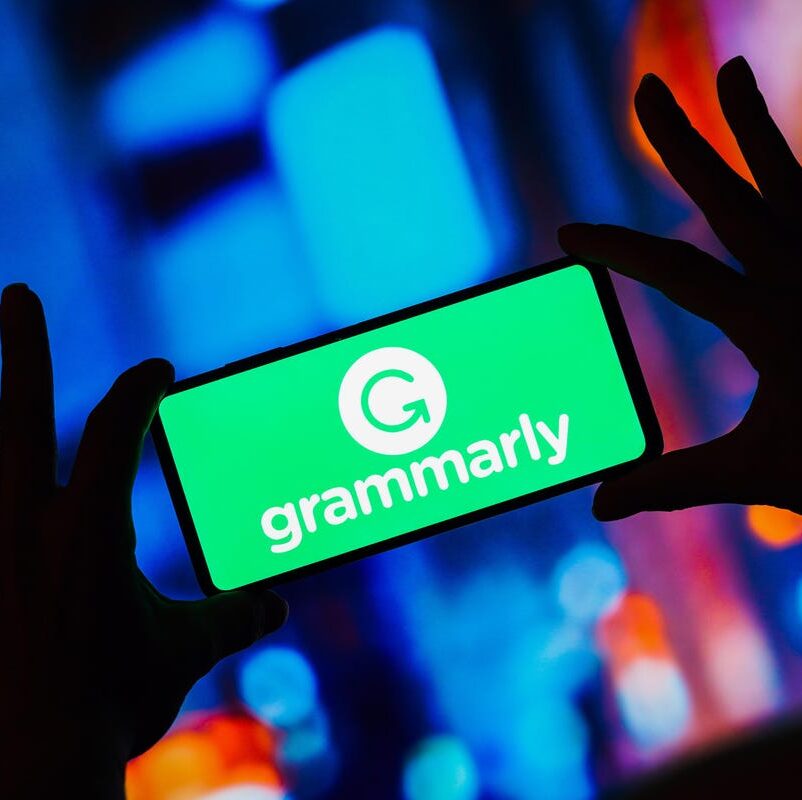
With the new feature, built on OpenAI’s GPT-3 large language models, users will be able to provide short prompts to create entire drafts of writing, rewrite text based on conciseness and tone and convert bullet points into paragraphs.
SOPA Images/LightRocket via Getty Images
The feature, which will be rolled out in April, will automatically be available across thousands of apps and websites such as Slack, LinkedIn, Facebook, Gmail and Google Docs.
AI-based writing assistant Grammarly announced Thursday that it is launching a generative AI feature called GrammarlyGo that will let users brainstorm ideas, compose writing, edit and personalize text. It’s the latest AI-powered tool for the company, which was founded in 2009 as a grammar checker but has since expanded to make writing suggestions as well as clarity, conciseness and tone adjustments.
With the new feature, built on OpenAI’s GPT-3 large language models, users can provide short prompts to create entire drafts of writing and convert bullet points to paragraphs. They can give feedback and additional context to the tool to rewrite a piece of text based on a preferred tone (such as professional, confident, or friendly) and length (shorter or longer). GrammarlyGo can also interpret the intent of an email, condense it into a single line and propose options for email replies based on the context of previous emails.
In April, these generative AI features will be available to Grammarly’s 30 million users through Grammarly’s browser extension and 500,000 websites, desktop and mobile applications where Grammarly is available. Users will be able to access GrammarlyGo features on apps like Slack, LinkedIn, Gmail and Google Docs. “This is our take on generative AI,” says Rahul Roy-Chowdhury, Grammarly’s global head of product. “We are present everywhere that people write. It’s not just a single app, it’s not just a single OS, it’s everywhere.”
For the past 14 years Grammarly has been building and applying a mix of technologies such as deep learning, machine learning, natural language processing and language models to suggest corrections to people’s writing. Grammarly’s algorithm is trained on millions of grammatically correct sentences and inputs from users and their writing experiences. But instead of using their in-house technology, Grammarly, which has a team of 100 engineers, scientists and linguists, is licensing Open AI’s buzzy technology and integrating it with its existing technologies as it looks to move beyond the revision phase of writing to incorporate comprehension and creation abilities.
The announcement comes after ChatGPT went viral late last year and crossed 100 million users in January 2023. The conversational chatbot has set in motion a generative AI frenzy, with several generative AI startups such as Autobound and Typeface emerging, and other companies such as Meta, Tome, Salesforce, and Roblox placing their bets on the technological advancements in language models.
But as interest and funding in the technology has grown, so has apprehension. Teachers are worried about students using ChatGPT as a shortcut to complete writing assignments and school districts across the country have blocked ChatGPT from school devices. That’s why when Grammarly rolls out its generative AI feature in April, school administrators would be able to decide whether they want to enable the feature on their school devices for students. However for individual users, the generative AI capabilities will be automatically activated.
Grammarly was cofounded by Ukrainian-born entrepreneurs and billionaires Max Lytvyn and Alex Shevchenko with the help of programmer and cofounder Dmytro Lider. In November 2021, Grammarly raised $200 million and was valued at $13 billion, bringing its total venture capital funding raised to $400 million. Before Grammarly, Lytvyn and Shevchenko founded plagiarism detection tool MyDropBox, which was later acquired by edtech company Blackboard. Today, Grammarly also checks for plagiarism but does not check for content written by AI.



